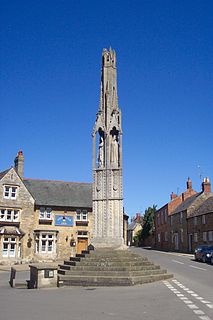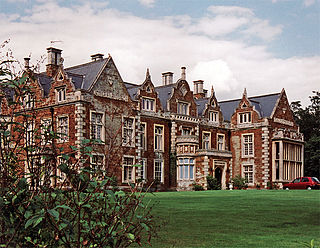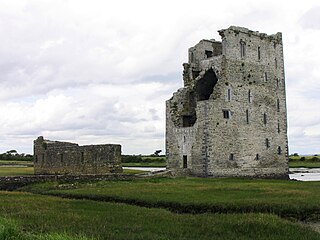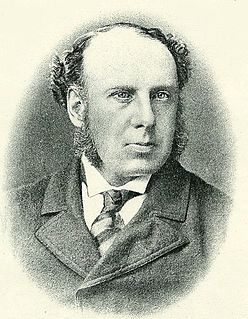Related Research Articles

Gerard Manley Hopkins was an English poet and Jesuit priest, whose posthumous fame placed him among the leading Victorian poets. His manipulation of prosody – particularly his concept of sprung rhythm – established him as an innovative writer of verse, as did his technique of praising God through vivid use of imagery and nature. Only after his death did Robert Bridges begin to publish a few of Hopkins's mature poems in anthologies, hoping to prepare the way for wider acceptance of his style. By 1930 his work was recognised as one of the most original literary accomplishments of his century. It had a marked influence on such leading 20th-century poets as T. S. Eliot, Dylan Thomas, W. H. Auden, Stephen Spender and Cecil Day-Lewis.

The Eleanor crosses were a series of twelve tall and lavishly decorated stone monuments topped with crosses erected in a line down part of the east of England. King Edward I had them built between 1291 and about 1295 in memory of his beloved wife Eleanor of Castile. The King and Queen had been married for 36 years and she stayed by the King’s side through his many travels. While on a royal progress, she died in the East Midlands in November 1290. The crosses, erected in her memory, marked the nightly resting-places along the route taken when her body was transported to Westminster Abbey near London.

Egmond aan den Hoef is a village in the Dutch province of North Holland. It is a part of the municipality of Bergen, and lies about 7 kilometres (4.3 mi) west of Alkmaar. Until 2001, Egmond aan den Hoef was part of the municipality of Egmond.

Digby Augustus Stewart Mackworth Dolben was an English poet who died young from drowning. He owes his poetic reputation to his cousin, Robert Bridges, poet laureate from 1913 to 1930, who edited a partial edition of his verse, Poems, in 1911.

Sir John Fowler, 1st Baronet, KCMG, LLD, FRSE was an English civil engineer specialising in the construction of railways and railway infrastructure. In the 1850s and 1860s, he was engineer for the world's first underground railway, London's Metropolitan Railway, built by the "cut-and-cover" method under city streets. In the 1880s, he was chief engineer for the Forth Bridge, which opened in 1890. Fowler's was a long and eminent career, spanning most of the 19th century's railway expansion, and he was engineer, adviser or consultant to many British and foreign railway companies and governments. He was the youngest president of the Institution of Civil Engineers, between 1865 and 1867, and his major works represent a lasting legacy of Victorian engineering.

Finedon is a small town in North Northamptonshire, with a population at the 2011 census of 4,309 people. In 1086 when the Domesday Book was completed, Finedon was a large royal manor, previously held by Queen Edith, wife of Edward the Confessor. From the 1860s the parish was much excavated for its iron ore, which lay underneath a layer of limestone and was quarried over the course of 100 years or more. Local furnaces produced pig iron and later the quarries supplied ore for the steel works at Corby. A disused quarry face in the south of the parish is a geological SSSI.

The siege of Carrigafoyle Castle took place on Easter in 1580 near modern-day Ballylongford, County Kerry, Ireland, on the southern bank of the Shannon estuary. The engagement was part of the English crown's campaign against the forces of Gerald FitzGerald, 14th Earl of Desmond during the Second Desmond Rebellion. The castle was held by rebel troops in the service of Desmond and some Catholic troops from continental Europe.

Sir William Henry Houldsworth, 1st Baronet was a mill-owner in Reddish, Lancashire. He was Conservative MP for Manchester North West from 1883 to 1906, and sometime chairman of the Fine Cotton Spinners' Association. He was made a baronet in 1887.

Windsor Castle is a royal residence at Windsor in the English county of Berkshire. It is strongly associated with the English and succeeding British royal family, and embodies almost 1,000 years of architectural history.

Fort Point Light is a decommissioned lighthouse built on the third tier of Fort Point, which is now directly beneath the south anchorage of the Golden Gate Bridge in San Francisco, California. The lighthouse is at the south end of the narrowest part of Golden Gate strait. It was preceded by two other lighthouses in nearby locations. The present lighthouse was in operation from 1864 until 1934.
This is a list of sheriffs and high sheriffs of the English county of Rutland.

Great Harrowden is a village and civil parish in North Northamptonshire, with a population at the 2011 census of 161. The village sits astride the busy A509 running between Kettering and Wellingborough - although a bypass is due to be built shortly. The village forms part of the Orlingbury hundred.

Stansted Mountfitchet Windmill is a grade II* listed Tower mill at Stansted Mountfitchet, Essex, England which is also a Scheduled Ancient Monument. It has been restored and can turn by wind.
HMS Investigator was a wooden paddle survey vessel of the Royal Navy, built to carry out an expedition on the Gabon River in Africa.

Cawston Road Mill is a tower mill at Aylsham, Norfolk, England which has been truncated and converted for use as a holiday home.

Jesus Lane is a street in central Cambridge, England. The street links with the junction of Bridge Street and Sidney Street to the west. To the east is a roundabout. To the south is King Street, running parallel with Jesus Lane and linking at the roundabout. The road continues east as Maid's Causeway and then Newmarket Road east out of Cambridge. To the north is Victoria Avenue between Jesus Green to the west and Midsummer Common to the east. Also to the north near the western end is Park Street, location of the ADC Theatre. To the south is Short Street, quickly leading into Emmanuel Road past Christ's Pieces.

Endcliffe Hall is a 19th-century, 36-room mansion situated on Endcliffe Vale Road in the City of Sheffield in the suburb of Endcliffe. The hall is situated just over three km west of the city centre and is a Grade II* Listed building.

The Dolben Baronetcy, of Finedon in the County of Northamptonshire, was a title in the Baronetage of England. It was created on 1 April 1704 for Gilbert Dolben, son of John Dolben, Archbishop of York. Gilbert was judge of the Court of Common Pleas (Ireland) and MP for Ripon, Peterborough and Yarmouth, Isle of Wight. The 3rd Baronet was an MP for Oxford University and Northamptonshire, and was an avid campaigner for abolition of the slave trade. The title became extinct on the death of Sir John English Dolben, the 4th Baronet, in 1837. William Harcourt Isham Mackworth (1806—1872), a younger son of Sir Digby Mackworth, the 3rd Baronet, took the additional surname Dolben after he married Frances, the heiress of the 4th Baronet.

Finedon Hall is a Victorian country house in Finedon, Northamptonshire. It is a Grade II listed building.

The Church of St Laurence is a Grade I listed building in the village of Stanwick in North Northamptonshire. It was originally within the Church of England Diocese of Lincoln but was transferred to the Diocese of Peterborough in 1541 towards the end of the Dissolution of the Monasteries during Henry VIII's reign.
References
- ↑ Stamford Mercury 23 October 1863 page 4
- ↑ "The Accident off Lagos" New Zealand Herald, Volume I, Issue 97, 5 March 1864, Page 3
- ↑ Anglo-African 3 September 1863
- ↑ Gildings auction record